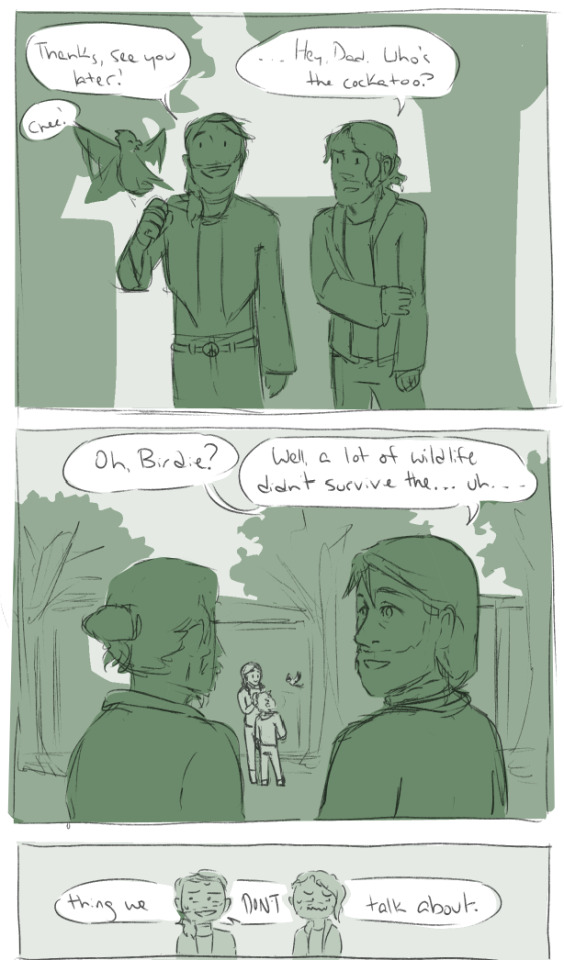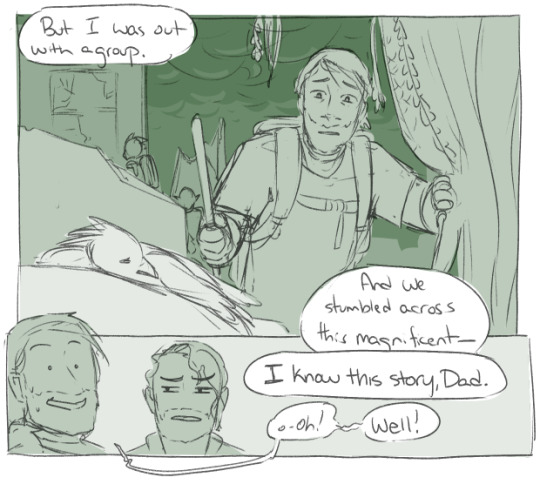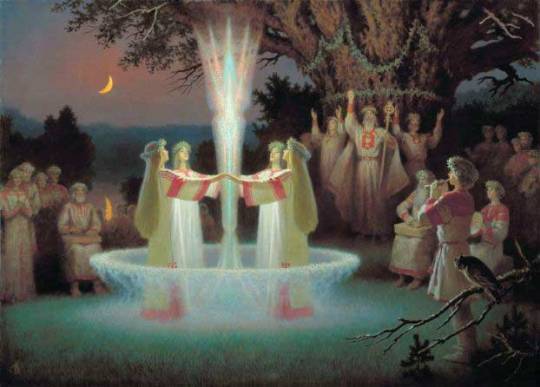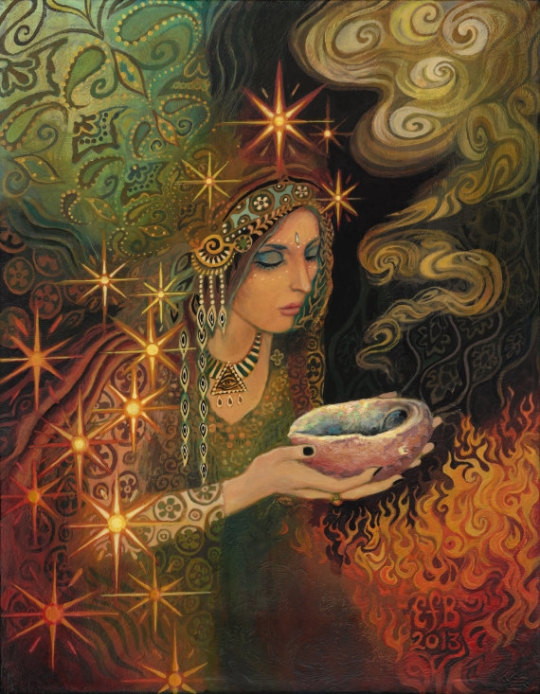#did you know druids can give sentience to animals
Text





anyway her fantasy name is Burr Dy'Oak, biological citizen of New Oakvale. And Bird.
#did you know druids can give sentience to animals#dndads#dndads 2#henry oak#birdie oak#I TOLD YOU IT WAS BAD BUT YOU WANTED IT#HERE YOU GO#im self conscious so in case the joke doest land:#what im saying is that Henry turned into a bird and had a bird child. with another bird.#and now sparrow knows he has a sister! who is a bird!#wholaidtheeggyouaskwellthatsuptoyoudearlistener#ANYWAY HAVE A NICE DAY#kineticallyart#headcanons
162 notes
·
View notes
Text
The History of Witchcraft Part 1
An Introduction to the Tangible Facts
Sit tight this is going to be a really long post, but interesting I swear.
With a topic as varied and vast as this, it'll be difficult to narrow it down. Especially when essentially witchcraft can cover anything vaguely phantasmagorical and unbelievable. So to start with I'm simply going to look at the actual history of it. As much as I would love to use this is as an excuse to research the folklore and myths and legends of other cultures and religions, due to the time restrictions of this project, I'm going to keep it local. I will look at witches originating from UK origins, maybe sliding slightly into the puritan purges in America, but essentially Anglo-Saxon history. It's the one I already have the best base knowledge on and the one I feel I can manipulate the aesthetic of fairly and accurately.

To really dive down into the history I’ve split this post into two parts. For the sake of my examiner a lot of my research I’ll be putting into posts like these but feel free to skip to the end where I’ll put a vague bibliography of where I got my info. It won’t cover everything I’ve read though as I do a lot of article reading on my phone.
But if you are interested click the read more.
What I didn't really anticipate in this project is how confusing it is to find a starting point with witchcraft. Even trying to define it is a struggle. It largely depends on who or what religion is in charge and what the leaders of that religion deem to be heresy. For example one of the earliest forms of organised practice of magic comes from Celtic history and folklore. The Druids were members of the high-ranking professional class in ancient Celtic cultures. While perhaps best remembered as religious leaders, they were also legal authorities, adjudicators, lore-keepers, medical professionals and political advisors. They were responsible for organising worship and sacrifices, divination, and judicial procedure in Gaulish, British and Irish society. They had scripture but it was largely oral, thus a lot of what is known about them was from Roman and Greek scholars studying them. The records kept on these Druids, especially those detailing the human sacrifice, is met with some criticism. Records state that Druids used to burn people alive in large Wicker Man structures or stab them in the chest and read the future from the blood splatter. However, the Romans and Greeks were known to project what they saw as barbaric traits onto foreign peoples including not only druids but Jews and Christians as well, thereby confirming their own "cultural superiority" in their own minds. So it's unknown if their accounts are reliable.

Despite the fact the main religion of the Romans was now Catholic and the belief in Roman mythology was dwindling during the occupation, there's a lot of evidence to suggest that other religions like that of the Druids were still heavily prevalent in Britain. By the time of the Anglo-Saxon occupation, many Britons held firm to their own spiritual practices and found it easier to assimilate into another polytheistic religion like that of the Norse. Thus religion in Britain was a strange amalgamation of various cult practices, ritual and folklore. With Christianity being the opposing force to the Roman, Celtic and Norse polytheistic religions, they coined the term Pagan to insult them. Paganism is considered by many to be witchcraft but actually originates as the name given to those (mainly Romans) who practised a polytheism. Christianity, a monotheistic religion, eventually became the dominating force and denounced it as such. Pagan was a derogatory term used to allude to its inferiority, it was referred to as "the religion of the peasants".
"Paganism was a pejorative term that was applied to any non-Abrahamic or unfamiliar religion, and the term presumed a belief in false god(s)."

Paganism has been adopted by various religious groups since the 19th century, by groups who idolised the ancient world. It became an umbrella term generally applied to religions that strayed away from mainstream religions that generally followed one God, scripture and prophets. Contemporary Paganism or Neopaganism can be anything influenced by various historical pagan beliefs of pre-modern Europe. These groups largely practise religions that pantheistic, polytheistic or animistic.

Animism is the religious belief that objects, places and creatures all possess a distinct spiritual essence. It's a term that is often used to describe the religions of indigenous peoples and directly contrasts the worshipping system of many organised religions. Sacred status is granted to all things rather than selected artefacts and alters. It's an anthropomorphic construct that is used to explain peoples 'spiritualism'.
"Animism encompasses the beliefs that all material phenomena have agency, that there exists no hard and fast distinction between the spiritual and physical (or material) world and that soul or spirit or sentience exists not only in humans but also in other animals, plants, rocks, geographic features such as mountains or rivers or other entities of the natural environment, including thunder, wind and shadows."

So under that banner, I would place polytheistic mythologies such as Norse religions where thunder and lightning were personified as Thor, a powerful God that could be appeased with offerings. Or a lot of Native American beliefs stemming from the power of nature and animals, although I confess I do not know as nearly as much as I would like about it. This could be used to describe the religion that had a residence in England before Christianity, now referred to as Anglo-Saxon paganism. The religious beliefs and practices followed by the Anglo-Saxons between the 5th and 8th centuries AD, during the initial period of Early Medieval England seemingly didn't have a name if it did it has been lost. It came with much regional variation so definitive practises and beliefs cannot be pinned down but it carries a lot of similarities of Germanic paganism that had spread across a lot of North-West Europe. According to the archaeologists Martin Carver, Alex Sanmark, and Sarah Semple, Anglo-Saxon paganism was "not a religion with supraregional rules and institutions but a loose term for a variety of local intellectual worldviews." As Christianisation of England happened much of this religion gradually bled into folklore.

A lot of evidence of this religion comes from the writings of Christian scholars and archaeological artefacts attesting to ritualistic and cultic practices. "Further suggestions regarding the nature of Anglo-Saxon paganism have been developed through comparisons with the better-attested pre-Christian belief systems of neighbouring peoples such as the Norse." Since it has similar polytheistic beliefs, they believed in deities known as the ése (singular ós). Deities such as Woden, Thunor and Tiw. "Cultic practice largely revolved around demonstrations of devotion, including the sacrifice of inanimate objects and animals, to these deities, particularly at certain religious festivals during the year." A lot of their beliefs in supernatural entities have survived through folklore and now pop culture, elves, fairies and dragons all come from this practice.

Their beliefs clearly became entwined with the Christianity that eventually wiped it out, why else would Saint George randomly be fighting a dragon. I can't be the only person who was confused by the lack of other dragons in the continuity of the Bible. I will have to check that for definite since that is my own speculation but it would make sense that the patron Saint of England is a blend of the two opposing beliefs that dominated Britain in early centuries. Because Carver stresses that, in Anglo-Saxon England, neither paganism nor Christianity represented "homogenous intellectual positions or canons and practice"; instead, there was "considerable interdigitation" between the two.

It's speculated that magic and witchcraft played heavily into their beliefs, elements that could be classified as a form of shamanism. Anglo-Saxon pagans believed in magic and witchcraft. There are various Old English terms for witches, including hægtesse translating to "witch, fury", which is believed to lead to the word hag in Modern English. Other words like Wicca, gealdricge, scinlæce and hellrúne are also used to describe what we would describe as witches.

"The belief in witchcraft was suppressed in the 9th to 10th century as is evident e.g. from the Laws of Ælfred". The Christian authorities attempted to stamp out a belief and practice in witchcraft, with the Paenitentiale Theodori attributed to Theodore of Tarsus condemning "those that consult divinations and use them in a pagan manner, or that permit people of that kind into their houses to seek some knowledge". Similarly, the U version of the Paenitentiale Theodori condemns those "who observe auguries, omens or dreams or any other prophecies after the manner of the pagans".
The word wiccan "witches" is associated with animistic healing rites in the Paenitentiale Halitgari where it is stated that:
"Some men are so blind that they bring their offering to earth-fast stone and also to trees and to wellsprings, as the witches teach, and are unwilling to understand how stupidly they do or how that dead stone or that dumb tree might help them or give forth health when they themselves are never able to stir from their place."

Amulets were a big part of Anglo-Saxon Paganism at least a large chunk of the physical evidence we have of that time as there are many cases where corpses were buried with them. As David Wilson noted, "To the early [Anglo-]Saxons, they were part and parcel of the supernatural that made up their world of 'belief', although occupying the shadowy dividing area between superstition and religion if indeed such a division actually existed." One of the most notable amulets found in Anglo-Saxon graves is the cowrie shell, which has been often interpreted by modern academics as having been a fertility symbol due to its physical resemblance to the vagina and the fact that it was most commonly found in female graves. Not being native to British seas, the cowrie shells had to have been brought to England by traders who had come all the way from the Red Sea in the Middle East. Animal teeth were also used as amulets by the pagan Anglo-Saxons, and many examples have been found that had formerly belonged to boar, beaver, and in some cases even humans. Other amulets included items such as amethyst and amber beads, pieces of quartz or iron pyrite, worked and unworked flint, pre-Anglo-Saxon coinage and fossils, and from their distribution in graves, it has been stated that in Anglo-Saxon pagan society, "amulets [were] very much more the preserve of women than men". Which is the stemming point for where a lot of imagery associated with witchcraft now is amulets and precious stones containing power.

Apologies if all this information is a bit disjointed I've been cherry-picking pieces of info I thought were fascinating and using this blog as kind of an online notebook. I'll keep dropping posts like this as I eventually pool my knowledge together to actually start building my project. So, I think for a first research post this suffices for one night of extensive googling. I'll be back at it again with more witchy history tomorrow.
A lot of my early research has come off Wikipedia I will admit that. But I like to read a lot at once and the way you can just click through links on there is exactly what I need to consume a baseline of information before I can research specific things more thoroughly and corroborate the facts. Honestly, I'm glad I did because I had no idea that Pagan was an old-timey slur, I was originally just going to jump into the modern day stuff and hope I could get the history through context but it seems the meaning of that word has changed drastically. So these blog posts will be picked out sentences and paragraphs that I find relevant. I will try to write a lot of it in my own words but for time's sake I probably will cut and paste a lot of it, just so I can keep all the info I might want to refer back to in one place and not have to go on multiple internet dives to find it. From here I will go onto look at the persecution of witches and from there the modern-day impacts. All photos are from Google and Pinterest if it's a piece of artwork that I could trace back to an artist I've put their names in the caption.
Basic Bibliography
https://en.wikipedia.org/wiki/Witchcraft
https://en.wikipedia.org/wiki/Druid
https://en.wikipedia.org/wiki/Druidry_(modern)
https://www.druidry.org//druid-way/what-druidry/what-druidism/what-druid
https://en.wikipedia.org/wiki/Animism
http://www.bbc.co.uk/religion/religions/paganism/
http://www.bbc.co.uk/religion/0/20693321https://en.wikipedia.org/wiki/Anglo-Saxon_paganism
https://www.thoughtco.com/wicca-witchcraft-or-paganism-2562823
0 notes